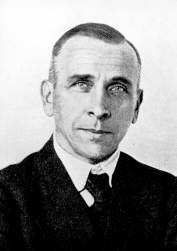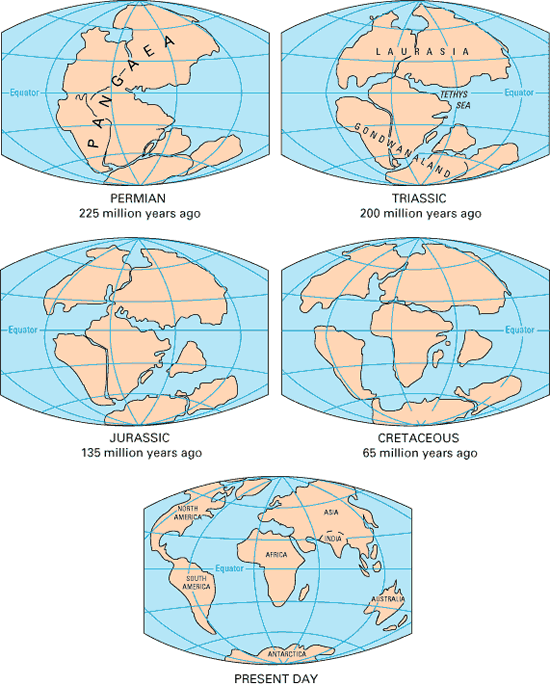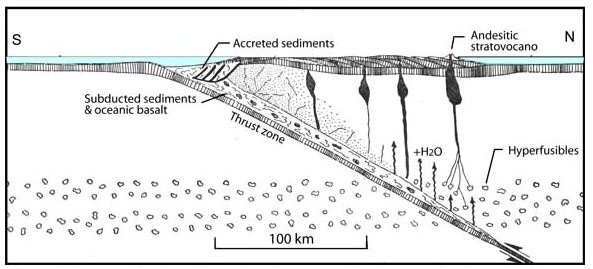|
Plate tectonics is a theory of geology that has been developed to explain the observed evidence for large scale
motions of theEarth's lithosphere. The theory encompassed and superseded the older theory of continental drift from the first
half of the 20th century and the concept of sea-floor spreading developed during the 1960s.
Continental drift was one of many ideas about tectonics proposed in the late 19th and early 20th centuries. The theory
has been superseded by and the concepts and data have been incorporated within plate tectonics. Alfred Wegener was who originated
the idea.
|

|
| Alfred Wegener |
|

|
| Continental drift |
|
In the 60s was prompted by a number of discoveries, most notably the Mid-Atlantic ridge. The most notable was the 1962
publication of a paper by American geologist Harry Hess. Hess suggested that instead of continents moving through oceanic
crust, as was suggested by continental drift, that an ocean basin and its adjoining continent moved together on the same crustal
unit, or plate. In the same year, Robert Coats described the main features of island arc subduction in the Aleutian Islands.
In 1967, W. Jason Morgan proposed that the Earth's surface consists of 12 rigid plates that move relative to each other. Two
months later, in 1968, Xavier Le Pichon published a complete model based on 6 major plates with their relative motions.

|
| Harry Hess |

|
| Robert Coats |

|
| R.C. |

|
| W. Jason Morgan |

|
| Xavier Le Pichon |
|
